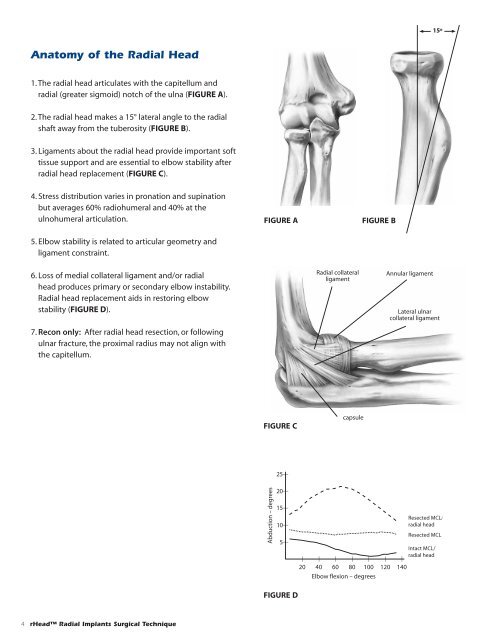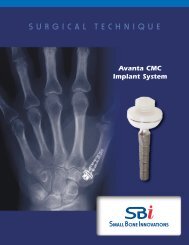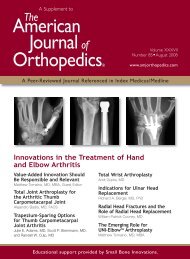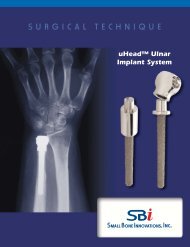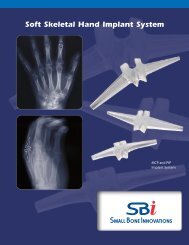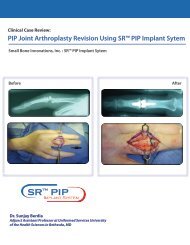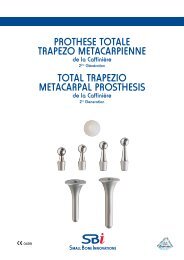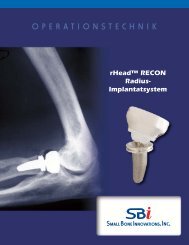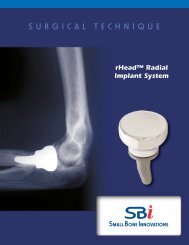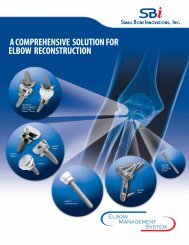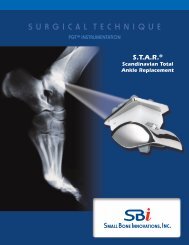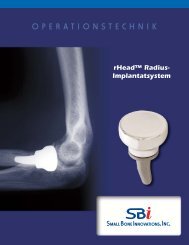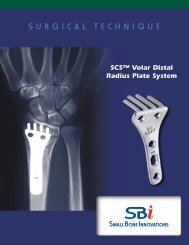Download the rHead⢠RECON Surgical Technique - Small Bone ...
Download the rHead⢠RECON Surgical Technique - Small Bone ...
Download the rHead⢠RECON Surgical Technique - Small Bone ...
Create successful ePaper yourself
Turn your PDF publications into a flip-book with our unique Google optimized e-Paper software.
15º<br />
Anatomy of <strong>the</strong> Radial Head<br />
1. The radial head articulates with <strong>the</strong> capitellum and<br />
radial (greater sigmoid) notch of <strong>the</strong> ulna (FIGURE A).<br />
2. The radial head makes a 15° lateral angle to <strong>the</strong> radial<br />
shaft away from <strong>the</strong> tuberosity (FIGURE B).<br />
3. Ligaments about <strong>the</strong> radial head provide important soft<br />
tissue support and are essential to elbow stability after<br />
radial head replacement (FIGURE C).<br />
4. Stress distribution varies in pronation and supination<br />
but averages 60% radiohumeral and 40% at <strong>the</strong><br />
ulnohumeral articulation.<br />
5. Elbow stability is related to articular geometry and<br />
ligament constraint.<br />
FIGURE A<br />
FIGURE B<br />
6. Loss of medial collateral ligament and/or radial<br />
head produces primary or secondary elbow instability.<br />
Radial head replacement aids in restoring elbow<br />
stability (FIGURE D).<br />
7. Recon only: After radial head resection, or following<br />
ulnar fracture, <strong>the</strong> proximal radius may not align with<br />
<strong>the</strong> capitellum.<br />
Radial collateral<br />
ligament<br />
Annular ligament<br />
Lateral ulnar<br />
collateral ligament<br />
FIGURE C<br />
capsule<br />
FIGURE D<br />
4 rHead Radial Implants <strong>Surgical</strong> <strong>Technique</strong>


